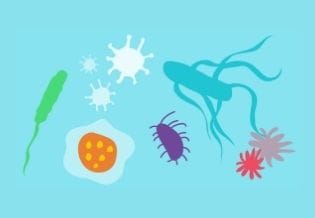Journal of Diseases
Abstract
An editorial introduction to the Journal of Diseases outlines its scope across infectious, chronic, and emerging conditions. It emphasizes integrative research, methodological rigor, and open access to accelerate translation into public health and clinical practice.
Author Contributions
Copyright © 2018 Sandra Grumelli
 This is an open-access article distributed under the terms of the Creative Commons Attribution License, which permits unrestricted use, distribution, and reproduction in any medium, provided the original author and source are credited.
This is an open-access article distributed under the terms of the Creative Commons Attribution License, which permits unrestricted use, distribution, and reproduction in any medium, provided the original author and source are credited.
Competing interests
The authors have declared that no competing interests exist.
Citation:
Introduction:
From the Journal of Disease, we recognize that studies of diseases have greatly contributed to the understanding of the intricacies of the biochemistry of the normal human body physiology. An example of this process is appreciated in the studies of Chronic Obstructive Pulmonary Disease (COPD), where at its beginning was treated as asthma. However, the basic research on immune cells from diseased tissue was central to understand not only the mechanism of the disease but also the regulation of the immune system which was mostly researched by studies of patients with human immunodeficiency virus (HIV). This disease has the particularity to make evident how after the immune system has been triggered, by an injury or toxic like cigarette smoke, it may derive to different diseases like cancer or emphysema. It has been reported that only 0.8 to 1.7% of COPD patients develops cancer1, 2 and a maximum of 8.6% incidence has been reported3, while 27% of HIV patients have COPD4, suggesting a mechanism orthogonal of disease progression between cancer and emphysema.
What are the determinants to the disease outcome after smoke exposure? is it genetics? gene regulation or epigenic? intensity of the exposure to smoke or infections? The answers to these questions would give a better insight of the immune system regulation after it has been activated and cleared the injury.
This is why studying the diseased state is so important for understanding the functioning in health and how to restore it once it has been lost.
References
- 1.Tockman M S, Anthonisen N R, Wright E C. (1987) Airways obstruction and the risk for lung cancer. , Ann Intern Med1987; 106, 512-518.
- 2.Vineis P, Airoldi L, Veglia F.Environmental tobacco smoke and risk of respiratory cancer and chronic obstructive pulmonary disease in former smokers and never smokers in the EPIC prospective study,BMJ2005;. 330-277.

